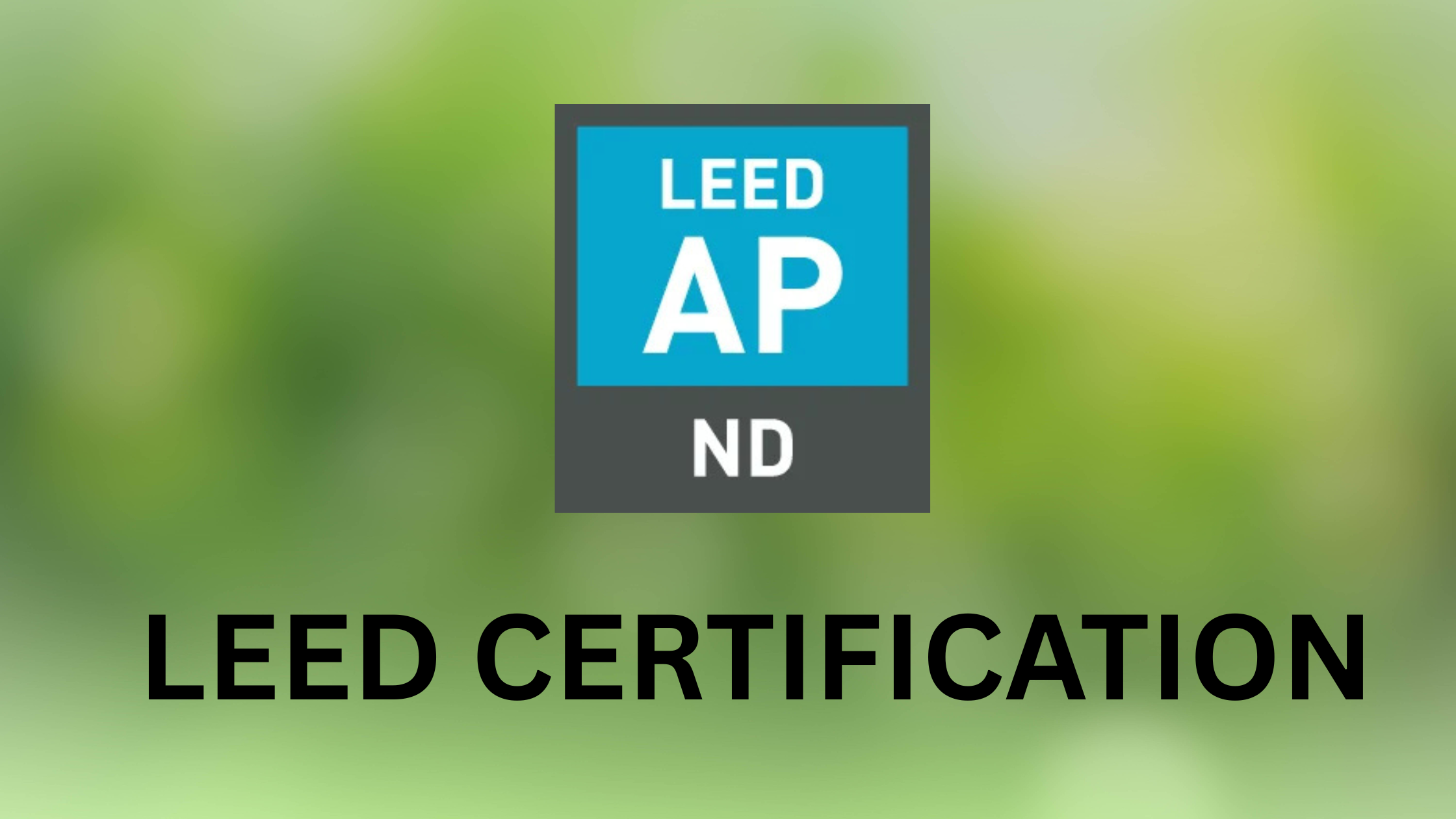Why LEED Certification Matters for Green Buildings
In today’s world, sustainability isn’t just a trend—it’s a necessity. As the construction industry shifts toward more eco-conscious practices, LEED certification has become a leading standard for environmentally responsible building. Short for Leadership in Energy and Environmental Design, LEED certification helps builders, developers, and property owners create buildings that are efficient, healthy, and cost-effective.Recognized globally, LEED certification doesn’t just signify environmental awareness—it proves a building’s performance in sustainability. Whether it’s a commercial office, a residential property, or a school, LEED plays a critical role in the future of green construction.
What Is LEED Certification?
Developed by the U.S. Green Building Council (USGBC), LEED certification provides a point-based rating system to evaluate buildings based on their design, construction, operation, and maintenance. Projects earn points by meeting specific criteria in various categories, such as energy use, water efficiency, waste reduction, and indoor air quality.The number of points earned determines the certification level:
- Certified: 40–49 points
- Silver: 50–59 points
- Gold: 60–79 points
- Platinum: 80+ points
This flexible system allows projects to tailor their sustainability goals while encouraging continuous improvement.
Why LEED Certification Matters
1. Environmental Benefits
LEED-certified buildings are designed to reduce their ecological footprint. From conserving water and reducing carbon emissions to using sustainable materials, these buildings have a much lower impact on the environment than traditional ones.Given that buildings account for roughly 40% of global carbon emissions, transitioning to green standards like LEED is vital to addressing climate change.
2. Cost Efficiency
While some might see green building practices as costly, LEED-certified projects often result in long-term savings. Energy-efficient lighting, HVAC systems, and water-saving fixtures help lower utility bills and reduce operating expenses over time.
3. Increased Property Value
LEED-certified buildings are increasingly in demand, especially as tenants and investors prioritize sustainability. These properties often enjoy higher occupancy rates, resale value, and rental premiums compared to non-certified counterparts.
4. Healthier Indoor Spaces
LEED prioritizes indoor environmental quality by promoting natural lighting, proper ventilation, and reduced use of toxic materials. This leads to healthier, more comfortable living and working environments, which can enhance productivity and reduce absenteeism.
5. Boosts Brand Image and CSR
For businesses, LEED certification signals a strong commitment to corporate social responsibility (CSR). It shows stakeholders—employees, investors, customers—that the company values sustainability, which can enhance reputation and brand loyalty.
Key Categories in LEED Certification
LEED evaluates buildings in several major categories:
- Sustainable Sites: Reduces environmental impact through smart site selection and landscaping.
- Water Efficiency: Promotes strategies that use less water indoors and outdoors.
- Energy and Atmosphere: Focuses on reducing energy consumption and encouraging renewable energy use.
- Materials and Resources: Encourages the use of recycled, locally sourced, and sustainable building materials.
- Indoor Environmental Quality: Prioritizes indoor air quality, lighting, and thermal comfort.
- Innovation in Design: Rewards creative and effective sustainable design strategies.
- Regional Priority: Addresses environmental priorities specific to a building’s location.
These categories ensure a comprehensive evaluation of a building’s sustainability.
Who Should Consider LEED Certification?
LEED certification is suitable for:
- Architects and engineers designing sustainable structures
- Developers and builders seeking market advantages
- Facility managers aiming to improve building performance
- Corporate leaders aligning with ESG goals
- Government bodies promoting public health and energy efficiency
- Homeowners interested in green living
No matter the project type, LEED provides a roadmap for sustainability and efficiency.
The Certification Process
Obtaining LEED certification involves a few essential steps:
- Register the project with USGBC.
- Choose relevant credits that align with sustainability goals.
- Submit documentation proving compliance with LEED standards.
- Undergo a review conducted by Green Business Certification Inc. (GBCI).
- Receive certification based on the points achieved.
Though the process may require extra effort, the long-term benefits make it a worthwhile investment.
Common Myths and Challenges
Many people assume LEED certification is too expensive or only meant for large commercial projects. However, LEED offers various rating systems—including for homes and neighborhoods—and numerous incentives are available to offset costs. With proper planning and guidance, even small projects can achieve certification.
Looking Ahead: The Future of LEED
As the demand for sustainable buildings grows, LEED continues to evolve. Upcoming updates will likely focus on climate resilience, zero-carbon buildings, and biodiversity protection. For professionals in the construction and design industries, LEED remains a key tool to stay ahead of environmental and regulatory changes.
Conclusion
In an era when sustainability is more important than ever, LEED certification offers a clear path toward creating buildings that are better for the environment, more efficient to operate, and healthier for occupants. It’s not just about checking a box—it’s about setting a higher standard and leading by example.Whether you're a business owner, builder, or homeowner, pursuing LEED certification can be a powerful step toward a greener, smarter future.

